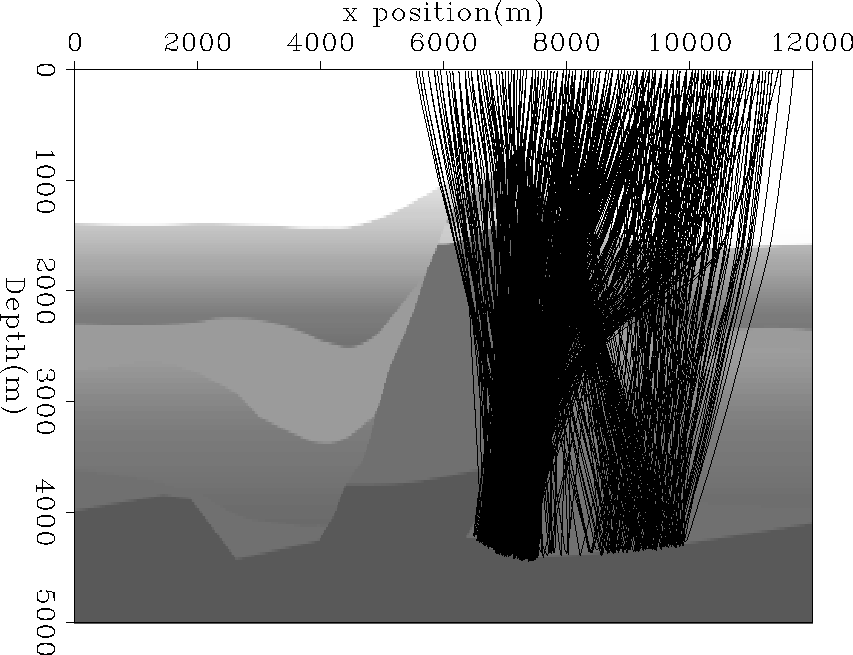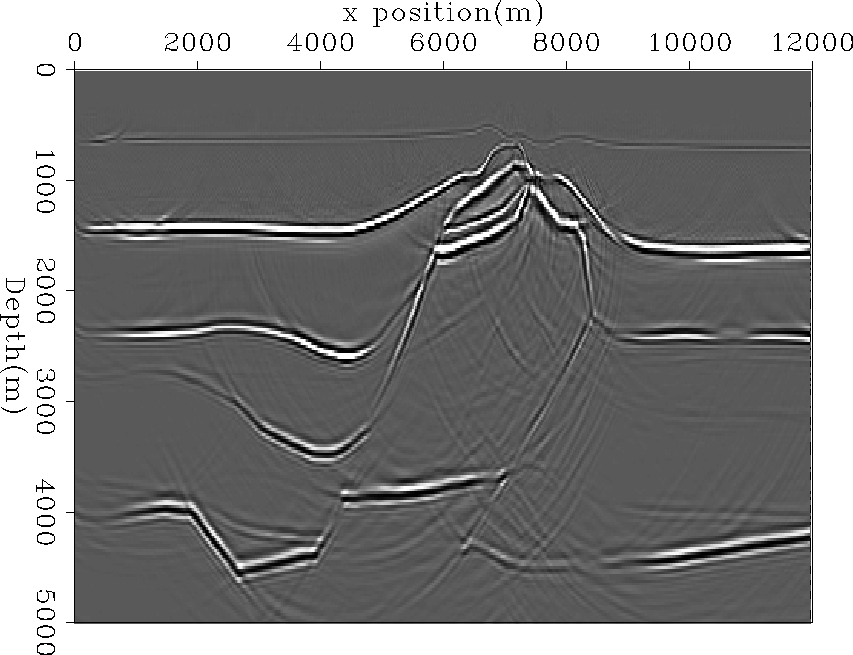 |
Figure 4 Raypaths through the synthetic model impinging on the problem section of the reflector
Our work up to this point has concentrated on analysis of the 2-D synthetic model. To analyze the finite-difference generated data we began by constructing travel time maps using a fast-marching eikonal solver Fomel (1997). The pre-stack Kirchhoff depth migrated common-offset sections obtained by this method can be seen in Figure 5. The depth migration code used was developed by us using Genkir3D, a package designed to aid in the development of Kirchhoff imaging applications. Biondi (1998).
Figure 5 displays many interesting features. The only processing that has been done is pre-stack Kirchhoff depth migration followed by stacking the common offset sections. Comparing the stacked section to the velocity model shows that we have done a good job of imaging even the steeply dipping reflectors. However, there are fairly strong migration artifacts and noise in the area beneath the edge of the salt. The most interesting feature is on the reflector we wish to image almost directly beneath the edge of the salt body. The strong reflector suddenly disappears then reappears as a faint event. This corresponds with Figure 6 which shows common reflector point (CRP) gathers illustrating that away from the edge of the salt we did flatten the events and the reflector is quite strong but near the salt our reflector becomes practically non-existent. It is this intriguing behavior that we examine next.
 |
 |